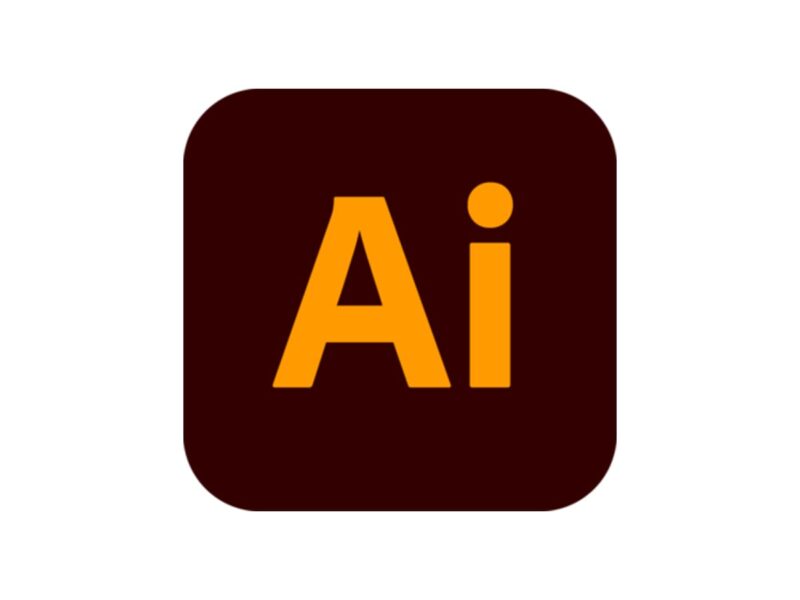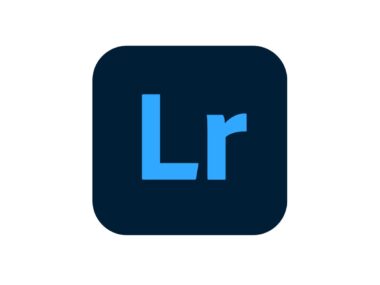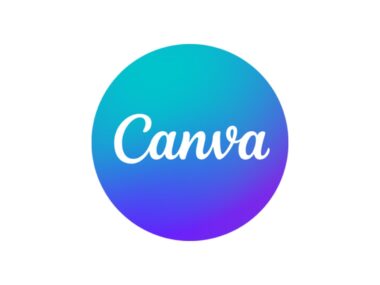Table of Contents
Key Features of Adobe Illustrator Design Software
Adobe Illustrator, a highly regarded design software in the industry, offers a multitude of features that cater to a broad range of design needs. Its core functionality is centered around vector graphic creation, which relies on points, curves, and lines to create graphics that maintain their clarity when resized.
Key features of Adobe Illustrator include:
- Creation of Precise Lines and Shapes: Illustrator enables the creation of detailed lines and shapes, which can be combined to produce stunning graphics. It also allows for the generation of customizable vector graphics from simple text descriptions, broadening its utility for creating icons, patterns, and more.
- Precision Tools for Illustration: The software offers an array of tools like the Pen, Curvature, and Pencil tools for crafting both straight and curved lines, thus empowering users to draw virtually anything they can imagine.
- Shape Building and Editing: Complex shapes can be crafted by combining simpler ones using the Shape Builder tool, which is particularly useful for creating geometric designs and icons.
- Artwork Manipulation: Illustrator provides tools for selecting, moving, rotating, scaling, and transforming artwork, including tools like the Selection tool for object manipulation and the Direct Selection tool for precise edits.
- Text Integration: It allows adding text to designs with extensive font options, and tools like the Type on a Path tool enable curving text along a line or shape, enhancing the blend of words with illustrations.
- Canvas Management: Features like the Artboard tool help in organizing design elements efficiently, allowing multiple artboards of any size.
- 3D Artwork Creation: Illustrator goes beyond 2D designs, offering tools for creating 3D artwork with realistic effects, lighting, and textures.
- Color and Pattern Creation: Tools like the Gradient tool for color blends and the Blend tool for combining shapes and colors are available, facilitating the creation of visually appealing designs.
- Innovative Functionalities: Illustrator includes advanced features like Generative Recolor for creating color palettes from text prompts and Mockup for creating realistic product mockups.
- Online Editing and Learning Resources: With the introduction of Illustrator on the web (beta), users can create and edit graphics directly in their browser. Additionally, the software includes built-in tutorials and tool guides for learning and inspiration.
This array of features makes Adobe Illustrator a powerful and versatile tool for designers of all skill levels, suitable for a wide range of graphic design tasks, from logo creation to complex illustrations.
Performance
Adobe Illustrator’s performance is influenced by various factors, including the operating system, hardware configuration, workflow, and selected options. The software’s performance can be optimized through several methods, ensuring smooth operation for different types of projects.
- Hardware and System Requirements: Illustrator’s performance is closely tied to the system’s hardware configuration. A system with a faster processor, sufficient RAM, and a solid-state drive (SSD) will enhance Illustrator’s speed and efficiency. High-performance CPUs like Intel’s 13th or 12th Generation Core i9 or i7, a dedicated graphics card with substantial VRAM, and adequate RAM (preferably 32 GB or 64 GB) are recommended for intensive design work. Adobe also suggests using the latest version of Illustrator, as updates often contain bug fixes and performance improvements.
- Managing Resources and Settings:
- Increasing Available Memory: Adjusting the paging file size to about three times the RAM can improve Illustrator’s performance.
- Font Management: Installing only necessary fonts and using a font management tool can help reduce RAM usage and boost system performance.
- Startup Programs: Limiting the number of applications that launch automatically can free up RAM for Illustrator.
- View Modes: Working in Outline View mode can speed up the display of complex artwork.
- Raster Effects Settings: Adjusting the resolution of raster effects can enhance performance, especially for complex illustrations.
- Layer Management: Hiding layers with complex objects or high-resolution raster images can speed up screen refresh rates.
- Specific Illustrator Features and Usage:
- Overprint Preview Mode: Turning off this mode, except when necessary for color-separation export, can improve performance.
- Artboard Management: Deleting unused artboards can optimize performance, especially in documents with multiple artboards.
- Scratch Disk Parameters: Using the hard drive as a scratch disk for integrated raster images can slow down performance; adjusting these settings can help.
- Image Linking: Linking rather than embedding raster images (TIF, BMP, or EPS formats) reduces the file size and improves performance.
- EPS File Handling: Using low-resolution previews for linked EPS images can speed up screen redraw.
In practical terms, users have reported that Illustrator runs smoothly for typical tasks like flat 2D illustrations. However, performance issues may arise with very complex illustrations involving gradients or TIFF textures. Additionally, vector graphics applications like Illustrator tend to rely more on the CPU than the GPU, making the CPU choice crucial for optimal performance. While high-end graphics cards are beneficial, they can be expensive, and in some cases, such as with laptops, heat management becomes a critical factor affecting performance.
In conclusion, optimizing Adobe Illustrator’s performance involves a combination of hardware configuration, careful management of system resources, and efficient use of Illustrator’s features. By addressing these areas, users can ensure smoother, more efficient operation of Illustrator in their daily design tasks.
Pros
- Compatibility with Various Systems: Illustrator functions on almost any computer system, including PC, Mac, and open-source operating systems, as long as they are not more than 5-7 years old. This broad compatibility facilitates widespread use.
- Integration with Adobe Products: It integrates seamlessly with other Adobe products, such as Flash and Photoshop, allowing users to create diverse graphics and effects.
- Precision in Graphics: The software excels in creating precise graphics, making it ideal for design projects of various sizes and scopes. The pen tool and shape tools enable the creation of very precise lines and shapes.
- Vector-Based Scalability: Illustrator works with vector images, allowing scalability without quality loss. This feature is crucial for designs that need to be resized for different applications, like billboards or business cards.
- User-Friendly Interface: The software offers a user-friendly UI, customizable viewing options, and space-saving features, enhancing the overall user experience.
- Efficient Workflow Management: Features like in-panel editing and multiple artboards increase productivity by allowing users to work on several projects simultaneously.
- Professional Design Capabilities: Illustrator is recognized as a professional design tool in the industry, offering features like blend modes, clipping masks, and alignment tools for complex designs. Mastery of Illustrator opens job opportunities in various design fields.
- Cloud Integration and Resources: It provides integration with Adobe Creative Cloud, offering access to a vast font library and cloud storage. Additionally, time-saving templates and keyboard shortcuts enhance workflow efficiency.
Cons
- Steep Learning Curve: New users may find Illustrator challenging due to its extensive range of tools and features. Even experienced users need time to familiarize themselves with newer updates.
- Resource-Heavy Application: Illustrator can be demanding on computing resources, especially when running multiple programs. This can lead to performance issues on older machines.
- Cost Factor: The software requires a paid subscription, which can be costly, especially for small business owners or teams. The full Creative Cloud plan is over $50 USD per month, making it a significant investment.
- Limited Raster Graphic Support: While excellent for vector graphics, Illustrator is not as adept at handling raster images like photos. For detailed photo editing, users often turn to Photoshop.
- File Compatibility and Export Challenges: Illustrator uses the .ai file format, which can sometimes cause compatibility issues with other design tools, especially older versions that do not support transparency. This may necessitate re-editing when exporting to universal file formats.
- Hardware Requirements: Efficient operation of Illustrator requires advanced hardware, including a fast processor, dedicated graphics card, and ample memory. Underpowered devices may experience slow performance and lag.
- Additional Costs and Settings Adjustments: Users might incur extra costs for hardware, add-ons, and resources. Furthermore, the default settings are more suited for print design, requiring adjustments for web and UI design.
- Limitations in Animation and Interactive Design: Illustrator is less suitable for creating interactive or animated designs, often requiring additional tools like Adobe XD or Photoshop for these purposes.
In summary, Adobe Illustrator is a powerful tool for vector graphic design, offering precision, scalability, and professional-level capabilities. However, its steep learning curve, resource requirements, and limitations in raster image editing and animation are factors to consider before adopting it as the primary design software.
Conclusion
Adobe Illustrator 2024 has introduced several significant updates and new features that reinforce its position as a leading design software. As an expert in the field, I find these updates not only enhance the software’s capabilities but also address some of the evolving needs of modern graphic design.
- Mockup (Beta): This feature allows users to create realistic mockups of their art on various objects like product packaging, mugs, and T-shirts. By applying vector art onto a raster object, Illustrator now honors the object’s curves and edges, adjusting the vector art non-destructively. This addition is a game-changer for designers, particularly in packaging and merchandise design, as it streamlines the mockup process significantly.
- Retype (Beta): Retype offers the ability to convert text within images and outlined text into live text for editing. This tool leverages a font matching system from Adobe Fonts or your computer, making it simpler to work with static text in raster images or recreate logos using existing font styles. This feature addresses one of the more tedious tasks in design – identifying and matching fonts, thus expediting the design process and enhancing productivity.
- Text to Vector: A groundbreaking addition in Illustrator 2024 is the “Text to Vector” feature. By simply typing a text prompt, Illustrator generates a vector image based on the description. This feature harnesses the power of AI to automate repetitive design tasks, opening up new avenues for creativity and efficiency in vector creation.
- Smooth Slider: An enhancement over the previous Smooth tool, the new Smooth slider allows for more controlled path smoothing. This feature provides the flexibility to smooth entire paths or just parts of them, offering greater precision in refining designs.
- Shareable Links to PDF Files for Review: This feature enables the creation of shareable links to PDF files for feedback collection, eliminating the need to convert them to .ai or .aic files. It’s a practical addition for collaborative workflows, making the review and feedback process more streamlined and accessible.
From an expert perspective, these enhancements in Adobe Illustrator 2024 reflect a strategic shift towards integrating AI capabilities to automate and simplify design processes. The emphasis on mockups, font identification, and text-to-vector transformations demonstrates Adobe’s commitment to evolving with the needs of the design community. These features not only enhance the tool’s usability but also open up new creative possibilities, making Illustrator more versatile and efficient for a wide range of design applications.
FAQs
-
What is Adobe Illustrator used for in graphic design?
Adobe Illustrator is a vector graphics software used for creating logos, icons, typography, illustrations, and complex graphics for print, web, and mobile applications.
-
Can Adobe Illustrator be used for web design?
Yes, Adobe Illustrator is suitable for web design, offering tools for creating scalable vector graphics, wireframes, and UI elements, along with export options optimized for web formats.
-
Does Adobe Illustrator support animation creation?
While Adobe Illustrator can design static graphics for animations, it doesn’t specialize in creating animations. For animating designs, additional software like Adobe After Effects is recommended.
-
How does Adobe Illustrator differ from Adobe Photoshop?
Adobe Illustrator focuses on vector graphic creation, ideal for scalable designs and precise line work, whereas Photoshop specializes in raster (pixel-based) image editing and complex photo manipulation.
-
Is Adobe Illustrator suitable for beginners in graphic design?
Adobe Illustrator has a steep learning curve but is suitable for beginners willing to invest time in learning. It offers comprehensive tools and resources that are valuable for all levels of graphic design.





